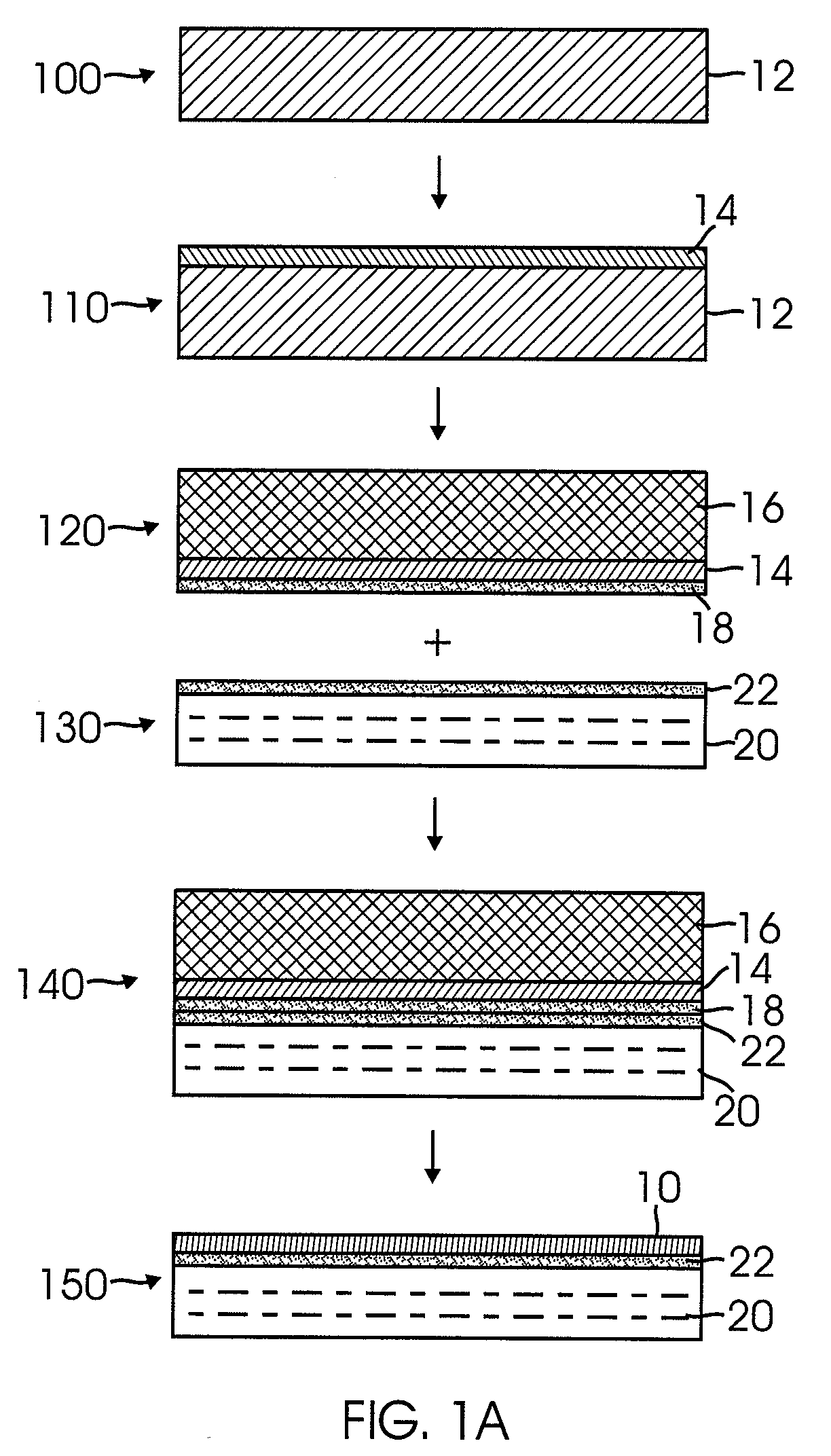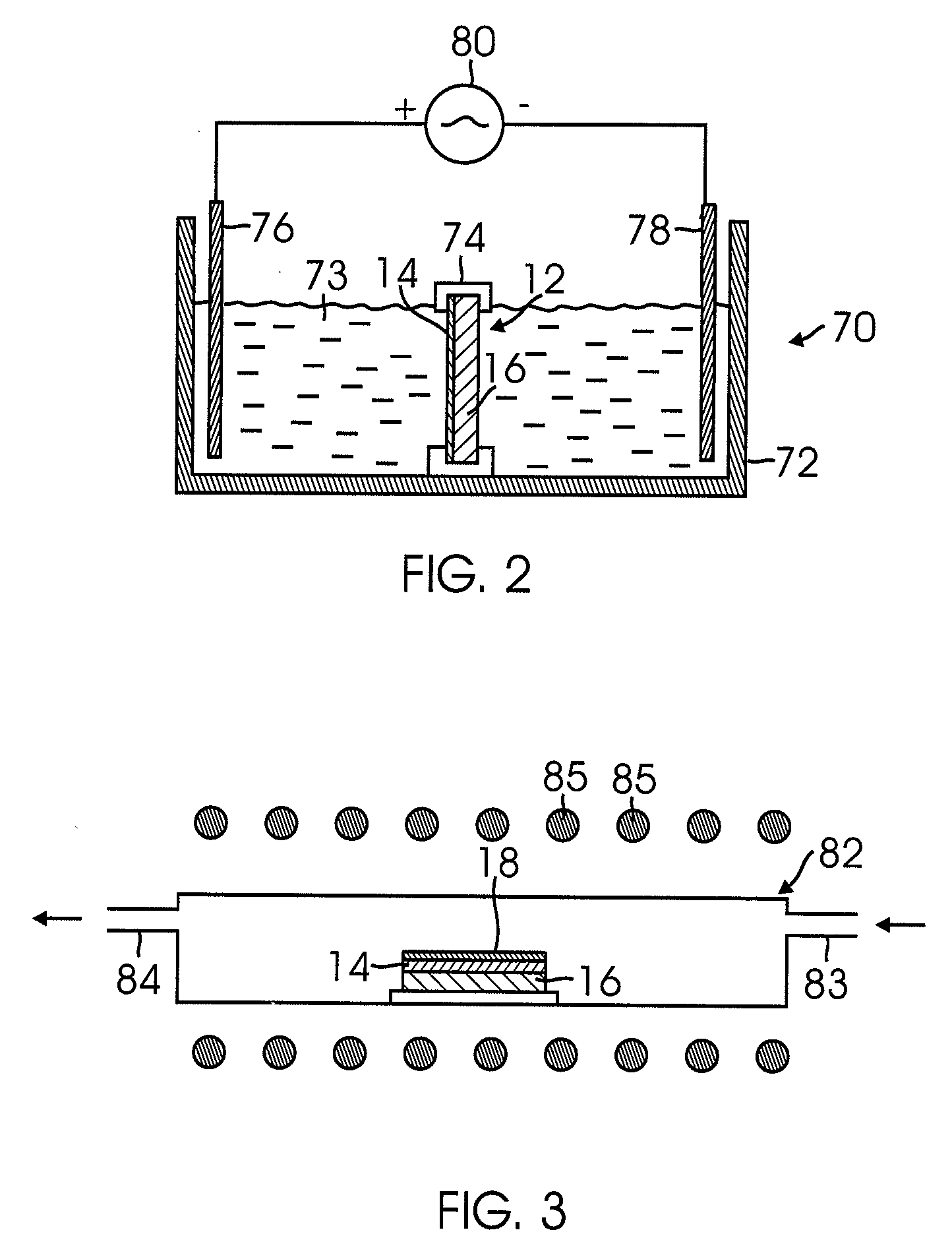Method for fabricating dislocation-free stressed thin films
a stress-free, thin film technology, applied in semiconductor/solid-state device manufacturing, basic electric elements, electric apparatus, etc., can solve the problems of reducing and reducing the cost of production, so as to reduce the size of the device and increase the cost of production
- Summary
- Abstract
- Description
- Claims
- Application Information
AI Technical Summary
Problems solved by technology
Method used
Image
Examples
Embodiment Construction
[0016]FIG. 1A illustrates a process of forming a homogeneously stressed thin film 10 on a transfer substrate 20 according to one embodiment of the invention. Initially, in step 100, a first substrate 12 is provided. The first substrate 12 may be formed from a semiconductor material, or in some instances, an insulator material. For example, in one aspect of the embodiment, the substrate 12 is formed from a doped, p+ type silicon substrate. The substrate 12 may be formed as wafer or the like such that the homogeneously stressed thin film 10 (described in more detail below) may be formed across (and subsequently transferred from) substantially the entire surface of the substrate 12. The p+ silicon substrate 12 is heavily doped with a doping agent such as boron, although other doping agents known to those skilled in the art may also be used.
[0017] In step 110, an un-doped epilayer 14 of silicon is formed on the doped, p+ type silicon substrate 12. Alternatively, n-type silicon may be u...
PUM
| Property | Measurement | Unit |
|---|---|---|
| thickness | aaaaa | aaaaa |
| temperature | aaaaa | aaaaa |
| temperature | aaaaa | aaaaa |
Abstract
Description
Claims
Application Information
 Login to View More
Login to View More - R&D
- Intellectual Property
- Life Sciences
- Materials
- Tech Scout
- Unparalleled Data Quality
- Higher Quality Content
- 60% Fewer Hallucinations
Browse by: Latest US Patents, China's latest patents, Technical Efficacy Thesaurus, Application Domain, Technology Topic, Popular Technical Reports.
© 2025 PatSnap. All rights reserved.Legal|Privacy policy|Modern Slavery Act Transparency Statement|Sitemap|About US| Contact US: help@patsnap.com



